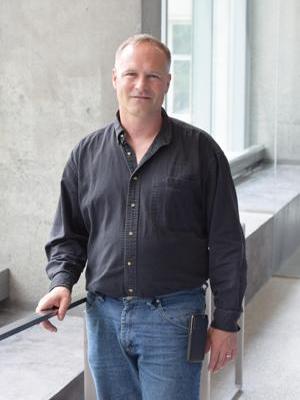A research team including a physicist at the University of Waterloo has explained the formation of glass at the molecular level, thus providing a potential solution to a long-standing problem.
 Professor James Forrest is among a team of scientists who have described how glasses form at the molecular level. (credit: University of Waterloo)
Professor James Forrest is among a team of scientists who have described how glasses form at the molecular level. (credit: University of Waterloo)
The simple theory proposed by the research team holds potential to develop innovative nanomaterials and allow even undergraduates and non-experts to study glass. McMaster University, Université Paris Diderot and ESPCI ParisTech are the other institutes contributed to the study published in the Proceedings of the National Academy of Sciences (PNAS) journal.
Glass is much more than just a material based on silicon. Any solid can be considered as glass if it does not have an ordered, crystalline structure, and generates a molten liquid upon heating beyond a certain temperature. Glasses are a key class of materials in technology, housing, pharmaceuticals, renewable energy, and nanoelectronics.
We were surprised — delighted — that the model turned out to be so simple. We were convinced it had already been published.
James Forrest, a University Research Chair and professor in the Faculty of Science
Molecular crowding and string-like co-operative movement are the two basic concepts constituting the theory. Molecular crowding explains the movement of molecules within glass that resemble the movement of people in a packed room. The increase in the number of people reduces the amount of free volume, making people to move slowly through the crowd. However, people near the door can move more freely. Likewise, molecules at the surface of glass continue to flow even at lower temperatures.
If the number of people in the room is more, then their movement relies on the co-operative movement of their neighbors. Similarly, the movement of individual glass molecules is restricted by the weak molecular bonds with their neighbors. Although crowding and cooperative movement theories have been known for years, this is the first time both the theories have combined to explain the transformation of a liquid into glass.
Research on glasses is normally reserved for specialists in condensed matter physics. Now a whole new generation of scientists can study and apply glasses just using first-year calculus.
orrest, a member of the Waterloo Institute for Nanotechnology
With this theory, different phenomena, from surface flow to bulk behavior and even the glass transition can be predicted. Nearly two decades of efforts taken by Forrest and colleagues are involved to bring this theory in line with several years of investigation on glassy materials.
An accurate theory gains significance in the effort of acquiring knowledge about the dynamics of glass at the nanoscale. These results are helpful to develop novel nanomaterials, including glass with conductive properties, and to estimate the uptake of glassy forms of pharmaceuticals.
Elie Raphael, Kari Dalnoki-Veress, Justin Salez, and Thomas Salez are the co-authors of the paper. The work was funded by the Natural Sciences and Engineering Research Council (NSERC) of Canada and Perimeter.
References